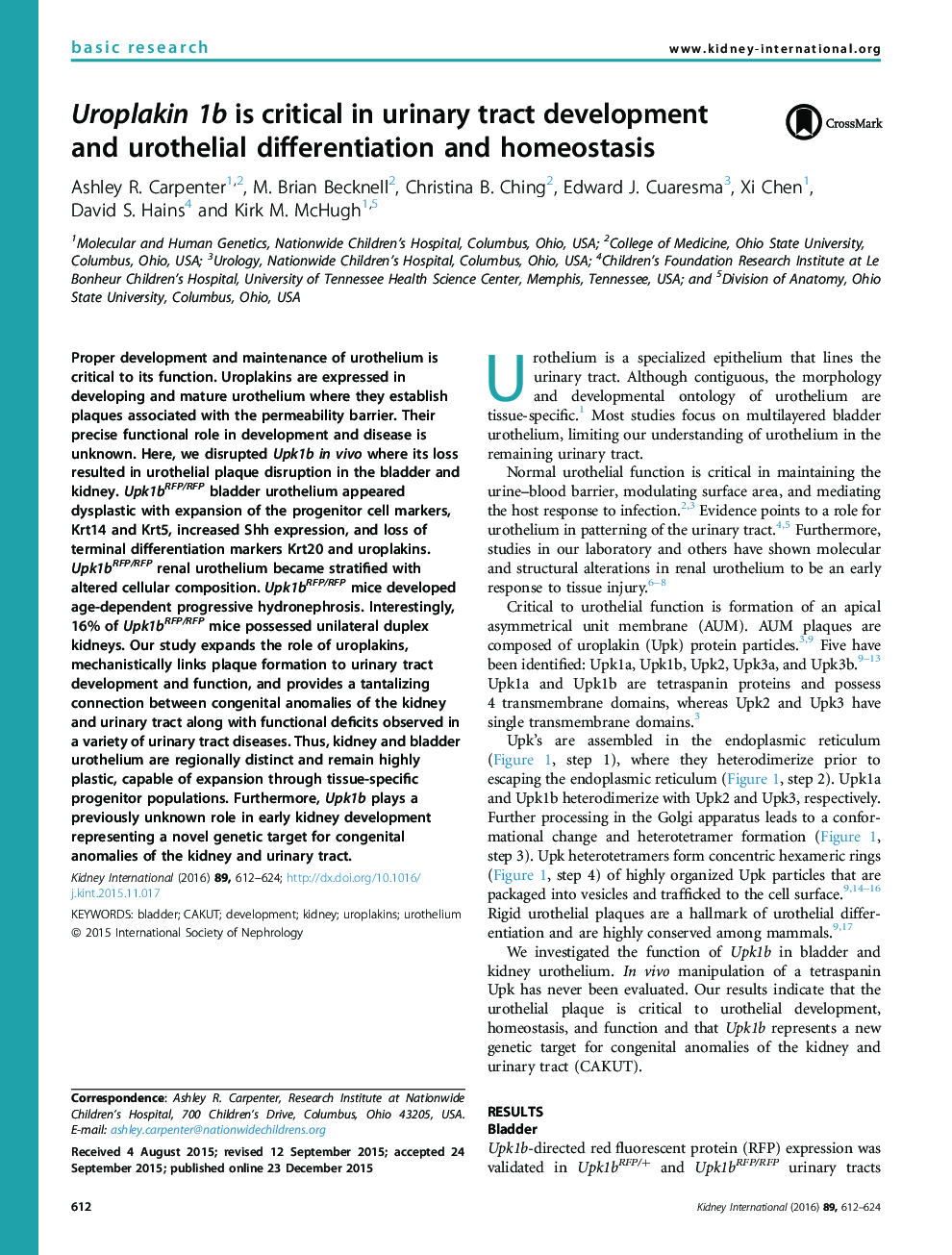| Article ID | Journal | Published Year | Pages | File Type |
|---|---|---|---|---|
| 6163177 | Kidney International | 2016 | 13 Pages |
Abstract
Proper development and maintenance of urothelium is critical to its function. Uroplakins are expressed in developing and mature urothelium where they establish plaques associated with the permeability barrier. Their precise functional role in development and disease is unknown. Here, we disrupted Upk1b in vivo where its loss resulted in urothelial plaque disruption in the bladder and kidney. Upk1bRFP/RFP bladder urothelium appeared dysplastic with expansion of the progenitor cell markers, Krt14 and Krt5, increased Shh expression, and loss of terminal differentiation markers Krt20 and uroplakins. Upk1bRFP/RFP renal urothelium became stratified with altered cellular composition. Upk1bRFP/RFP mice developed age-dependent progressive hydronephrosis. Interestingly, 16% of Upk1bRFP/RFP mice possessed unilateral duplex kidneys. Our study expands the role of uroplakins, mechanistically links plaque formation to urinary tract development and function, and provides a tantalizing connection between congenital anomalies of the kidney and urinary tract along with functional deficits observed in a variety of urinary tract diseases. Thus, kidney and bladder urothelium are regionally distinct and remain highly plastic, capable of expansion through tissue-specific progenitor populations. Furthermore, Upk1b plays a previously unknown role in early kidney development representing a novel genetic target for congenital anomalies of the kidney and urinary tract.
Related Topics
Health Sciences
Medicine and Dentistry
Nephrology
Authors
Ashley R. Carpenter, M. Brian Becknell, Christina B. Ching, Edward J. Cuaresma, Xi Chen, David S. Hains, Kirk M. McHugh,
